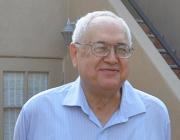Date Published:
MAR 8Abstract:
A theoretical study is made on He scattering from three basic classes of disordered adlayers: (a) translationally random adsorbates, (b) disordered compact islands, and (c) fractal submonolayers. The implications of the results to experimental studies of He scattering from disordered surfaces are discussed, and a combined experimental-theoretical study is made for Ag submonolayers on Pt(111). Some of the main theoretical findings are: (1) The scattering intensities from the three disorder classes differ significantly, and can be used to distinguish between them. (2) Structural aspects of the calculated intensities from translationally random clusters were found to be strongly correlated with those of individual clusters. (3) For fractal islands, just as for all surfaces considered here, the off-specular intensity depends on the parameters of the He/Ag interaction, and does not follow a universal power law as previously proposed in the literature. In the experimental-theoretical study of Ag on Pt(111), we use experimental He scattering data from low-coverage (single adsorbate systems to determine an empirical He/Ag-Pt potential of good quality. Then, we carry out He scattering calculations for high coverage and compare with experiments for these systems. The conclusion is that the actual experimental phase corresponds to small compact Ag clusters of narrow size distribution, with partial translational disorder. (C) 1997 American Institute of Physics.
